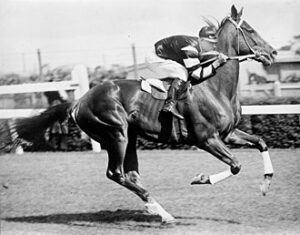Heart. Beat. Heart. Beat. Ba bum. Ba bum. Lub dub. Lub dub.
From the moment we are born to our last moments on this planet, our hearts are our own personal drummers, quietly thump-thump-thumping in the background. As athletes, we take our heart’s cues and do our best to correlate heart rate to effort and training. We strap on heart rate monitors, try to keep in prescribed zones, and diligently track numbers over time.
Your heart is not a computer, though, and can be affected by several variables. For example, go back to your days of being single, and think about the first time you met your spouse or significant other. Can you remember your heart beating wildly? Consider other stressful situations – physical exertion aside – when your heart rate elevated and seemed to call more loudly and quickly. Caffeine intake and stress, for example, can also affect heart rate.
With wearable technology, be clear on what you’re measuring. We aren’t wired like a Homo sapiens version of a video game. Our goal is knowledge, not a high score. Use your monitor to maintain and not exceed intensity, especially if you’re training for an upcoming race.
Triangulate Your Data
Think about the last time you performed an interval workout at the end of a stressful day. With multiple stressors, heart rate monitor numbers will skew high. If you’re only looking at one data point – your monitor number – and ignoring the stress closing in, you may think you’re getting training value when you’re not. Your physiological demands are not as high as your heart rate tells you they are.
Or picture yourself in the middle of an open water swim, the gray cold water wide before you. If you’re swimming point A to point B, with no additional frame of reference, measuring the straightness of your path may be difficult. You’ll be weaving back and forth, wasting energy. However, if you maintain a third point of reference and can triangulate efforts as a reference to position, your path will be straighter. Same thing applies in research. Your endpoint will be difficult to find if that’s your only focus. Find a third data point so you can triangulate your results for accuracy and significance. If our singular focus is a number on our heart rate monitor, we ignore the effects on heart rate of other factors in our lives, such as stress and caffeine intake, which both moderate heart rate. The more data points we collect, the better we’re able to measure intensity and recovery.
The best use of your heart rate monitor is to combine with other data sets. Use the monitor as one of a set of three data points. Two other metrics to track would be your performance, and your mood. To track performance, monitor your interval times, your lifts, how many rounds you accomplished, or how easy or hard your efforts were. If you haven’t noticed, mood can be the number one predictor for a workout. If you start a race in a bad mood, chances are you’re going to have a bad race. Give yourself a simple questionnaire on how you felt before, during and after the workout, and record your honest answers.
Return to Nature
The purpose of the heart rate monitor is to provide information about your metabolic shifts, the reality of our survival in nature. Our metabolism shifts as activity output changes. Animals feel these shifts. When we pay close enough attention, we as human animals can feel these shifts too. It’s not the number on the monitor that’s important; it’s the understanding of changes in the body. The fun comes in connecting the dots of changes in heart rate, making your own conclusions and building your own correlations.
Heart rate can undoubtedly be used as a correlate to stress – when stress increases, so follows heart rate. If you’re stressed all day with work or emotional baggage, you are existing primarily in a sympathetic state (fight or flight), and you will have a higher heart rate than someone who fluctuates between sympathetic and parasympathetic (feed/breed/rest/digest). In training, the harder we exert, the more our heart rate and respiration increase to meet metabolic demand. In both the anaerobic and aerobic processes, we use oxygen (breathing) to increase metabolism.
We each have specific heart rate zones that correlate with our increased efforts. It is extremely valuable to us as athletes to determine where our individual heart rate zones are and when our metabolism shifts between aerobic and anaerobic processes. That’s your individual code to decipher.
Those markers shift every single day, all day long, based on how tired or stressed you are. If we can understand these markers from a recovered state – truly feel those shifts at different heart rates – then we no longer need to observe the heart rate. We can rely on what we know about our own bodies. For example, typically breathing will change into a double-breath pattern at the aerobic threshold, and if we know that, then to thy own self we can be true. We can understand change and build our own correlates.
Be Your Own Experiment
Understand your heart rate monitor as a legitimate scientific tool that can be used to make changes for your singular self, and use your technology to return you to the tools provided by nature. Be responsible for your own physiology and for understanding it; this is how we make great changes in our being and our performance.
We actually encourage our athletes to find their baseline HR zones by doing a metabolic test every so often to understand the feeling of the shifts in energy and efficiency. The same lessons apply here as well — learn from the numbers and collect your data points, and to find your complete story.
Learn more about our training by checking out SH//FT’s All-Access Membership.

 The
The 